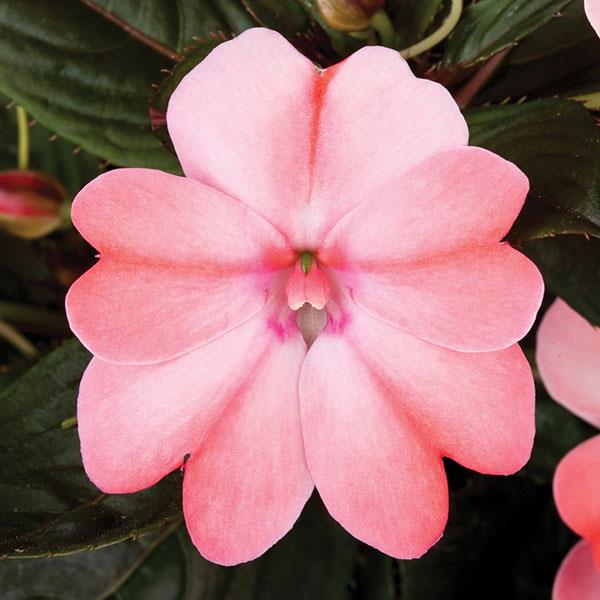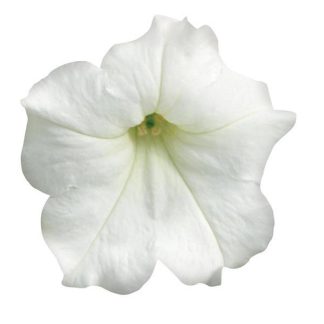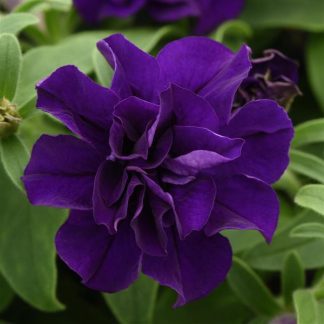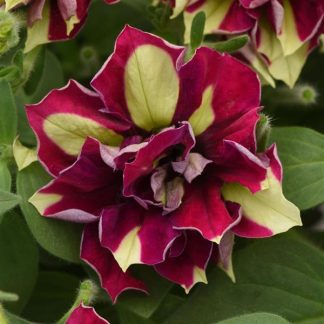Description
SunPatiens Compact Blush Pink: A Friendly Guide for Blooms That Shine All Season
A Bright Hello
You want flowers that never quit. We want a garden that greets friends with color. SunPatiens Compact Blush Pink lets us have both. These plants bloom from cool spring mornings to warm fall sunsets. The soft pink petals glow against deep green leaves. They work in sun. They work in shade. They work in pots, beds, and hanging baskets. Most of all, they work for busy gardeners who still crave beauty.
In other words, our lives stay full, but our gardens can stay full, too.
What Makes SunPatiens Special?
SunPatiens are not your grandma’s impatiens. Classic impatiens fear hot sun and sticky air. SunPatiens thrive in both. Instead of wilting at noon, they keep pushing out new buds. They were bred from Impatiens hawkeri, a tough species from New Guinea, mixed with other lines for nonstop show. This blend gives three big gifts: sun endurance, thick stems, and disease defense.
So we gain freedom. We plant once, enjoy for months, and worry much less.
Meet the Compact Series
SunPatiens come in three habits—Compact, Spreading, and Vigorous. The Compact group stays neat, about 14–24 inches tall and wide. That size fits window boxes, patio pots, and tidy front beds. They form tight domes packed with blooms. The color show is intense yet organized.
By choosing Compact Blush Pink, we choose both calm style and bold impact.
Why Blush Pink Steals Hearts
Blush Pink is soft yet bright. Each petal carries a gentle shell-pink tone that can lean toward peach in early light or hint at coral at dusk. The center eye is creamy white. That contrast makes every bloom look like a tiny cupcake with frosting. A mound of them together feels like a cloud of cotton candy—sweet, light, inviting.
After more than one glance, visitors usually ask, “What is that lovely plant?” We smile and share the name.
Perfect Spots to Grow
- Full sun to part shade. Six hours of sun gives the biggest flower load, but morning sun plus afternoon shade works fine in hotter zones.
- Warm soil. Wait until nighttime temps sit above 55 °F. Cold, wet soil slows roots.
- Good drainage. Raised beds or large pots with holes keep roots happy.
- Rich mix. Add compost or slow-release fertilizer at planting time.
- Air flow. Place plants a bit apart so leaves dry after rain.
Instead of cramming them shoulder to shoulder, we space them at least 12 inches apart. They soon touch anyway.
Quick Care Snapshot
| Task | What to Do | How Often |
|---|---|---|
| Water | Deep soak at root zone | When top inch feels dry |
| Feed | Balanced liquid feed | Every 2–3 weeks |
| Deadhead | Not needed | Petals self-clean |
| Trim | Lightly shear by one-third | Mid-summer if leggy |
| Mulch | Two inches of fine bark | Once after planting |
This simple routine keeps the show rolling with little fuss.
Step-by-Step Planting Guide
- Pick the right pot or bed. Choose a 10-inch or larger container, or loosen soil in the garden to 8 inches deep.
- Prep the mix. Blend equal parts good garden soil, compost, and pine fines. Mix in a slow-release fertilizer per label.
- Soak the root ball. Water the nursery pot until it drains. This prevents shock.
- Plant level. Slide the plant out, place it so the crown sits even with soil. Backfill and firm gently.
- Water well. Soak until water runs out the bottom. This settles soil around the roots.
- Add mulch. Keep mulch clear of stems.
- Shade for a day. If the sun is extreme, give light shade for 24 hours to let roots adjust.
After more than one week, you will see fresh buds forming. That is our reward.
Water Wisdom
These impatiens love moisture but hate wet feet. We water deeply, then wait for the top inch to feel dry. In high heat, that may mean every other day in pots. In cooler spells, every four days can do. Instead of quick sprinkles, we give a slow drink at the base. Leaves stay dry; disease stays away.
A drip line or a long-spout watering can makes the job easy.
Feeding for Endless Bloom
SunPatiens use lots of energy to make petals nonstop. We help them by:
- Mixing a slow-release granular feed in the soil at planting.
- Applying a half-strength liquid 20-20-20 or 15-30-15 every two to three weeks.
- Flushing with clear water once a month to prevent salt buildup in pots.
You will notice richer color and thicker stems when nutrition stays steady.
Light and Temperature Needs
- Ideal temps: 70–90 °F days. They keep blooming down to 60 °F nights.
- Heat resilience: Even near 100 °F, blooms hold if soil moisture is steady.
- Cool tolerance: Short dips to 45 °F may slow growth but rarely harm.
- Frost: A single frost ends the season, so we plant after danger passes.
By watching the forecast, we avoid sad surprises.
Pruning and Grooming
SunPatiens drop spent petals on their own. That saves time. Yet by midsummer, stems can stretch. A light shear by one-third encourages dense new growth. Use clean scissors. Water and feed right after trimming. Within two weeks, the plant will burst with even more blooms.
Instead of fighting nature, we guide it.
Overwintering Tricks
These plants are tender. But we can carry favorites through winter indoors.
- Before frost, cut back by half and dig up the healthiest plant.
- Pot it up in fresh mix and inspect for insects.
- Place in bright, indirect light, 65-75 °F.
- Water sparingly—just enough to keep soil barely moist.
- Pinch tips every few weeks to prevent lanky growth.
- Harden off next spring before replanting outdoors.
Some gardeners also take cuttings. A four-inch tip in water roots in two weeks. We then pot the rooted cutting and grow a fresh plant for the new season.
Companion Planting Ideas
Blush Pink plays well with many friends.
- Grasses: Blue fescue or dwarf fountain grass add texture.
- Foliage plants: Sweet potato vine ‘Margarita’ offers chartreuse contrast.
- Trailing blooms: Calibrachoa in soft yellow spills over edges.
- Herbs: Lemon thyme smells good and fills gaps.
- Bulbs: Plant dwarf daffodils nearby; as they fade, SunPatiens take over.
By mixing heights, colors, and shapes, we create layers that invite pollinators and pure joy.
Growing in Containers
Pot Size
Start with at least 10 inches across. Larger pots stay moist longer and need less watering. One plant can fill a 12-inch pot alone. For a mixed planter, pair one Compact Blush Pink with two trailing partners.
Soil Choice
A peat-based mix with bark and perlite keeps roots happy. Add two cups of compost for every gallon of mix for extra life.
Water and Feed
Container plants dry out faster than ground plants. Check daily in heat. Use the finger test. If dry to the first knuckle, water thoroughly. Feed with liquid bloom food every two weeks to replace lost nutrients.
Design Tip
Plant Blush Pink near the pot edge and let it dome over the rim while trailers spill below. Place a vertical accent like dracaena in the center for height. The result feels full and lush.
Solving Common Problems
| Problem | Sign | Quick Fix |
|---|---|---|
| Wilting at noon | Leaves droop, soil dry | Water deeply; add mulch |
| Yellow lower leaves | Overwatering, poor drainage | Check pot holes; let soil dry slightly |
| Powdery mildew | White dust on leaves | Space plants, improve air flow, use organic sulfur spray |
| Aphids | Sticky leaves, tiny bugs | Blast with water, use insecticidal soap |
| Faded flower color | Low feed | Apply balanced fertilizer |
But most of all, healthy plants resist trouble. Feed, water, and space them right, and problems stay minor.
Sustainable Garden Steps
We can enjoy color while caring for our planet.
- Collect rainwater for watering.
- Use compost instead of synthetic boosters when possible.
- Add leaf mold or pine bark as mulch to feed soil life.
- Plant nectar flowers nearby to lure beneficial insects that tackle pests.
- Reuse plastic pots or recycle at local nurseries.
Small actions add up, and our gardens will thank us.
Bringing Blooms Indoors
SunPatiens make cheerful cut flowers. Snip stems early in the morning. Remove lower leaves. Place in cool water with a drop of lemon juice. They last three to five days on a sunny table. Mix with ferns or baby’s breath for a sweet cottage feel.
This simple step lets us share garden joy inside the home.
Garden Design Inspiration
Picture a white-painted fence with alternating mounds of SunPatiens Compact Blush Pink and lavender catmint. The pink softens the bold fence line, while the cool lavender tones create a soothing rhythm.
Or imagine a shady porch. A trio of charcoal pots holds Blush Pink, lime green coleus, and silver dichondra spilling down. The blend of pink, lime, and silver catches the eye without shouting.
After more than one season, you may find yourself trying new color pairs each spring. That learning journey keeps gardening fresh.
Community and Story
When we grow plants, we grow stories. Children learn to water and watch buds open. Neighbors smile as they walk past your colorful beds. Local bees hum over the blooms, grabbing a quick snack. Each day, Blush Pink gives back in small ways.
Sharing cuttings with friends spreads the joy further. Soon, whole blocks can glow with the same soft hue. It turns a street into a living quilt of color and care.
A Bloom-Filled Farewell
Endless Petal Promise
SunPatiens Compact Blush Pink is easy, eager, and ever-blooming. We plant, we water, and we watch the show. The rest of the year, it does the work for us.
So let us tuck a few seedlings into that bare corner. Let us brighten the patio with a pot or two. And let us enjoy the steady dance of pink petals, morning after morning, until frost finally calls the curtain.
Grow bold. Grow gentle. Grow together.




